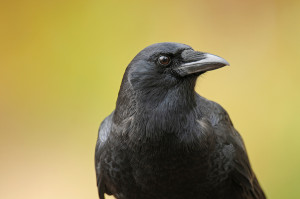 As more animals are found to have advanced cognitive ability, it is clear that the human brain is not the model for all advanced abilities. There are animals that have greater capacities; and those with similar capacities can use very different brain structures. Intelligence evolved a number of different ways. Last week 28 studies revealed unprecedented detail about the songbird’s brain. They, for the first time, compared vocal learning similarities in songbirds and humans. They, also, demonstrated unique details of how animal behavior is related to very specific genetic networks.
As more animals are found to have advanced cognitive ability, it is clear that the human brain is not the model for all advanced abilities. There are animals that have greater capacities; and those with similar capacities can use very different brain structures. Intelligence evolved a number of different ways. Last week 28 studies revealed unprecedented detail about the songbird’s brain. They, for the first time, compared vocal learning similarities in songbirds and humans. They, also, demonstrated unique details of how animal behavior is related to very specific genetic networks.
 A previous post highlighted three animals with highly unique brains and very advanced capabilities—bees, lizards and birds. With a tiny brain, bees use abstract concepts, symbolic language and kaleidoscopic visual memory; they self medicate; and they have advanced social intelligence. Lizards have advanced social behavior and are quite intelligent with tools. Their capacities are completely unlike the stereotype that was promulgated with the incorrect human brain theory postulating a region called the “reptilian brain.” But, birds—called “feathered primates”—are perhaps the most intelligent animals with a small brain. The recent historic set of studies—28 papers mapping the genomes of 48 different birds including 32 of the 35 species—has described the genetic details of the songbird’s brain and compared it with humans.
A previous post highlighted three animals with highly unique brains and very advanced capabilities—bees, lizards and birds. With a tiny brain, bees use abstract concepts, symbolic language and kaleidoscopic visual memory; they self medicate; and they have advanced social intelligence. Lizards have advanced social behavior and are quite intelligent with tools. Their capacities are completely unlike the stereotype that was promulgated with the incorrect human brain theory postulating a region called the “reptilian brain.” But, birds—called “feathered primates”—are perhaps the most intelligent animals with a small brain. The recent historic set of studies—28 papers mapping the genomes of 48 different birds including 32 of the 35 species—has described the genetic details of the songbird’s brain and compared it with humans.
This recent research finds that songbird’s advanced vocal learning is very similar to human speech, but birds use a very different brain to accomplish it. In fact, the evolution of humans and birds diverged 300 million years ago, yet came up with the same capacities in different ways. Vocal learning songbirds diverged from other birds 60 million years ago. Most surprising, perhaps, are the many similarities between songbirds and human speech after such a long time.
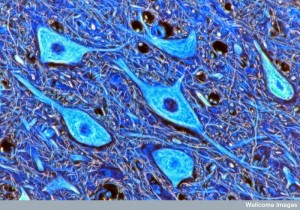 These studies for the first time detail the unique active genes that power the brain circuits for vocal learning in birds. Human studies lag behind in detail, since active genetic study of human neurons is difficult. This landmark, coordinated study greatly advances knowledge of fundamental ways that complex gene networks operate in learning and behavior, not just singing. (See posts on New Genetic Complexity and Networks of Genes Respond to Social Interactions).
These studies for the first time detail the unique active genes that power the brain circuits for vocal learning in birds. Human studies lag behind in detail, since active genetic study of human neurons is difficult. This landmark, coordinated study greatly advances knowledge of fundamental ways that complex gene networks operate in learning and behavior, not just singing. (See posts on New Genetic Complexity and Networks of Genes Respond to Social Interactions).
This post will summarize exciting new research showing that bird’s brains, while different from the human structure, can perform very similar complex tasks. It will, also, briefly summarize what is known about bird intelligence.
Bird Intelligence
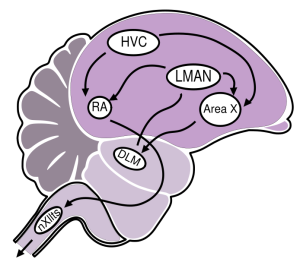
Birds have very small brains compared with humans. Much of the brain is occupied with the ability to fly. Very advanced learning has been observed in cockatoos, parrots, crows, songbirds and jays.
Recently, untrained cockatoos performed five sequential steps to unlock a cage—remove a pin, screw and then bolt, turn a wheel 90 degrees and shift a latch. Birds watching the first attempt did all steps immediately and never forgot them for years.
Crows remember people and cars for years and have metacognition and counting. They use tools better than most primates. They upgrade tools, molding wire into a hook and use three different tools for one task, more than chimps.
Alex, the parrot, showed skills for arithmetic and advanced language. He invented new words—“bannery” for a combination of banana and cherry. He could count, add to 8 and understood zero. Just before he died, he told Dr. Pepperberg “You be good. I love you.”
Summary of Recent Findings on Bird Intelligence
Navigation Skills:
 Birds use smells for navigation of thousands of miles. Birds take gyroscope readings at takeoff and compare them to their home readings. As they fly, they constantly correct these readings. How they read small gravitational forces is not known.
Birds use smells for navigation of thousands of miles. Birds take gyroscope readings at takeoff and compare them to their home readings. As they fly, they constantly correct these readings. How they read small gravitational forces is not known.- Hummingbirds live longer than 10 years and migrate 3500 miles.
- Birds who hide seeds have the best spatial navigation and spatial memory, much more than humans. They store seeds in up to thousands of different places and remember these for hours and months. Clark’s nutcracker stores 5000 seeds in different caches and then gets them 9 months later. Some birds examine a large amount of nests and then return to the one they have chosen. Hippocampus is normal as children and grows larger as they learn to hide their seeds.
- Songbirds weighing an ounce travel thousands of miles using elliptical routes with prevailing winds.
- Budgerigar birds can fly between a gap of two buildings at 106 percent of their wingspan. Humans turn to pass through a doorway 130 percent wider than them.
Other recent findings include:
- Crows are able to use analogies—solving higher-order, relational-matching tasks spontaneously. They build hooked stick tools very carefully observing each feature of the tool before use to make sure it can help with prey.
 Crows understand that dropping stones in a water bottle connected with a tube raised the water level at a distance to get a floating piece of meat.
Crows understand that dropping stones in a water bottle connected with a tube raised the water level at a distance to get a floating piece of meat.- Bowerbirds use advanced perspective, actively selecting specific material for their nests that hide them against the background. They choose to match the colors. They deliberately manipulate perception of color.
- Ravens can understand other bird’s rank by observation. Ravens have very complex societies with shifting political alliances.
- Parrots understand sharing, relating actions in the near time to human’s future.
- Fork-tailed drongos mimic other bird’s calls and scare other species by using false alarm calls.
- Pigeons memorize routes by using landscape properties and landmarks.
Songbirds
 Almost half of bird species are songbirds. They learn songs from a mentor, like humans, and then practice them. Songbirds name their children, who are known by that sound for life. They learn grammar and syntax from mentors. Their use of different tweets is more complex than monkey’s signals. New neurons grow in breeding and singing season and then die back to save energy. A signal of the dying cells stimulates the new cells.
Almost half of bird species are songbirds. They learn songs from a mentor, like humans, and then practice them. Songbirds name their children, who are known by that sound for life. They learn grammar and syntax from mentors. Their use of different tweets is more complex than monkey’s signals. New neurons grow in breeding and singing season and then die back to save energy. A signal of the dying cells stimulates the new cells.
Songbirds prefer singing in harmonic series similar to humans even though anatomically they could sing many other ways. They choose to sing in a particular key and with consonant intervals, octaves, fifths and fourths like humans. Songs are used for mating and defending territory
Although songbirds learn songs through mentors, they also have specific meaningful calls that don’t appear to be learned. Strangely, the same brain regions operate in both. The RA system appeared to alter when doing learned songs and calls.
Vocal Learning
Songbirds show many advanced behaviors related to vocal learning. They learn sounds, names, syntax and songs from mentors, then practice them and alter them. The name given to them is used their entire life.
 Many other animals communicate through a combination of sounds and gestures. Animals are able to imitate and learn specific sounds. Songbirds have syntax and naming. Whales, dolphins, elephants and other primates can learn new sounds with meaning. Vocal learning is, also, present in seals, sea lions, bats and elephants. Other primates have a limited version of this ability.
Many other animals communicate through a combination of sounds and gestures. Animals are able to imitate and learn specific sounds. Songbirds have syntax and naming. Whales, dolphins, elephants and other primates can learn new sounds with meaning. Vocal learning is, also, present in seals, sea lions, bats and elephants. Other primates have a limited version of this ability.
Vocal learning species, also, demonstrate some of the same human problems tha arise with deafness. They use different language dialects like humans. For vocal learning ability, a brain circuit includes cortex motor centers that stimulate muscles connected to the respiratory centers for airflow while talking and singing and vocal muscles.
Genetic Studies in Brains of Songbirds
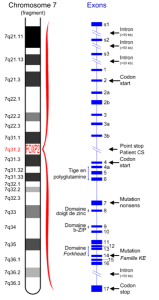
Many genes are similar in bird’s singing centers and human speech centers, which is one way of studying the brain mechanisms. By studying the highly complex genetic circuits and mechanisms in neurons of bird’s brains, it is possible to piece together exactly how the brains are utilized for vocal learning.
Early studies showed that a similar gene in both bird and human brain circuits, FOXP2, is critical for human speech and is utilized by songbirds. FOXP2 is one of 55 genes found in these studies that are similar in humans and the songbirds. They are different in other animals.
Gene Networks and Singing
Birds have very specific brain circuits that are used in learning for each song, just as humans have specific brain circuits for language learning and speech. Genetic networks in brain cells somehow create brain activity related to behavior of the organism. Singing, a behavior most common in songbirds and humans, is regulated by 10% of a bird’s genes. In most brain regions only 1% of them are used, so that each specific brain center uses very different genes. These gene networks are controlled by a large number of protein promoters and activators, as well as RNAs, that operate in very specific timed sequences in various brain cells. Surprisingly, it is found that many of the brain cell gene networks are primed even before they are needed in the sequence.
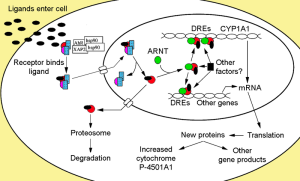 The firing of the first neurons set up a complex sequence where some of the genes are stimulated by large proteins called transcription factors in each different cell. Epigenetic mechanisms, which affect the packaging and opening of the DNA, are, also, crucial. They create a situation where particular DNA are ready and primed to be utilized.
The firing of the first neurons set up a complex sequence where some of the genes are stimulated by large proteins called transcription factors in each different cell. Epigenetic mechanisms, which affect the packaging and opening of the DNA, are, also, crucial. They create a situation where particular DNA are ready and primed to be utilized.
These primed pieces of DNA alter the function of the neuron in the exact instant that it is needed for the extremely complex motor activity in singing. These two ways of priming the genetic systems, proteins and epigenetic marks, are somehow coordinated throughout the brain. This research demonstrates an important new example of how molecular mechanisms that are correlated with extremely complex behavior.
Four Critical Bird Brain Regions
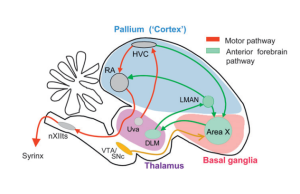
Birds have discrete vocal circuits for learning that have some similarities with circuits in humans related to speech. There are four critical brain nuclei in the songbird, who learns songs from a mentor, like humans. These four nuclei have definite similarities to the human brain circuits related to speech. Each uses distinct transcription factors for their genes and has unique epigenetic markings on the histones as well as the DNA itself. There are, also, very precise cites where these factors bind to the DNA. These different mechanisms utilize various factors for each function involved in the singing.
Four birdbrain centers are in three regions of the bird’s brain.
- HVC is the higher vocal center. It is a bird’s brain center for learning and production of song
- LMAN is the lateral magnocellular nucleus that is involved in learning new sounds or words.
- RA is the robust nucleus, somewhat similar to the human cortex.
- Area X in the bird’s striatum. The striatum is the center of motor learning, also called habit learning. This is region with the most genes.
The bird’s circuit for learning songs includes LMAN and Area X. The circuit for muscles that produce the song is HVC and RA, which is similar to the human motor cortex.
Very Complex Genetic and Protein Networks in Neurons for Singing
 The genetic regulation of the four centers is extremely complex. There are a group of early genes that are critical for singing. The more the bird sings, the more these genes are triggered.
The genetic regulation of the four centers is extremely complex. There are a group of early genes that are critical for singing. The more the bird sings, the more these genes are triggered.
Thousands of genes in the four song nuclei create 24,000 different proteins, and half appear to be directly related to controlling the neurons producing songs in the four nuclei. Five thousand messenger RNAs make proteins from 3 thousand genes that are used before the singing starts (at baseline during silence). These genes are related to many aspects of neuronal function.
When singing starts, twenty-five thousands messenger RNAs related to 1800 genes are utilized. Area X has the most. Most of these are in only one of the four centers; 100 are in three centers; and 20 are in all four.
A critical factor is calcium stimulation, which is triggered by unique factors in each region. Calcium is important both in preparation for singing and during. Calcium serves as a repressor and activator for neuron activity in the regions, mostly in Area X and HVC. After several hours of singing, all four regions have this calcium activity. It is important both for baseline and for each region during singing.
There are 22 specific genes that are considered critical for triggering different types of singing. Remarkably, many of these genes are, also, very active for other activities of life such as making new neurons. Of these many genes, there are smaller groups that are particularly related to specific sounds that would make up a song (such as phonemes in human speech). These are, also, stimulated by specific factors and epigenetic markings.
Epigenetic Regulation
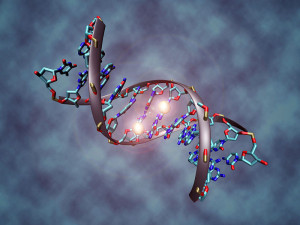 Epigenetic acetyl markings on histones occurred before singing, preparing regions for the song. The specific epigenetic markings near the activation sites determined which genes were used for specific tasks during singing.
Epigenetic acetyl markings on histones occurred before singing, preparing regions for the song. The specific epigenetic markings near the activation sites determined which genes were used for specific tasks during singing.
The research shows a large number of proteins in each of the four nuclei to regulate this very complex process and very specific epigenetic markings for each. These factors coordinate muscular and learning behavior for songs and singing.
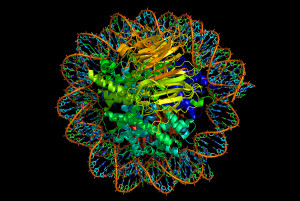 Singing stimulates neurons to send action potentials and to release neurotransmitters at synapses, activating postsynaptic receptors. This triggers vast genetic changes altering the cell’s activity. Histones, protecting the DNA, already have special tags in the correct places to activate the necessary behavior. The regions of DNA that are already ready and primed for activity then respond. Special unique factors are already in place in the four different regions (enhancers and promoters) to perform in an instant.
Singing stimulates neurons to send action potentials and to release neurotransmitters at synapses, activating postsynaptic receptors. This triggers vast genetic changes altering the cell’s activity. Histones, protecting the DNA, already have special tags in the correct places to activate the necessary behavior. The regions of DNA that are already ready and primed for activity then respond. Special unique factors are already in place in the four different regions (enhancers and promoters) to perform in an instant.
As new material is song learned, networks are altered from a pre arranged baseline. The new material is already able to change the exact genes that are to be utilized through these mechanisms.
Memory Switch for Short and Long Term Memory
For vocal memory, one theory involves two waves of gene activity. The early wave is a molecular switch for short-term memory, which produces a later wave for longer-term memory. Each of the four centers has their own genetic networks and switches. Normally, when there is a lot of activity, proteins are broken down, whereas the waves would continue alterations of the circuits during use for increased learning. Complex gene networks are therefore determining learning, maintenance of memory, and behavior with motor activity.
Conclusions About Human Brains Versus Song Birds
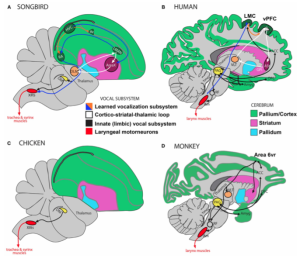
Both birds and humans have developed the ability to imitate and learn vocalizations. Vocal learning uses unique circuits in bird’s brains and the human cortex and striatum. This recent large series of studies has defined the genetic networks of all birds who learn with sound imitation, as well as humans. Genetic networks are extremely complex (see the post New Research Reveals Higher Levels of Genetic Complexity which describes the very large amount of factors and levels involved in regulating how genes work to make necessary molecules).
One finding is that the striatum of birds and humans are most similar.
Songbird Area X is the striatal region needed for vocal learning and is somewhat similar to the human striatum. The RA nucleus, which controls singing, is somewhat similar to the part of the human motor cortex that operates the larynx, controlling speech. 50 genes have very similar activity to control the neurons and muscles for both species. The RA region is similar to cortical layer 5 that is used for other purposes. There are, also, some similarities in a much wider circuit of brain regions in speech and singing, using a many different genes.
The RA and HVC are both part of the motor circuit producing meaningful sounds. Area X and LMAN are the brain regions that are used in imitation and learning of sounds and their meaning. Singing alone produces changes in thousands of genes. The state of the human brain before singing is not known.
Other significant findings include:
- The bird’s ventral striatum next to Area X is similar to human nucleus accumbens, which is significant in motivation, reward and addiction.
- The bird’s RA is most similar to human central sulcus in primary motor cortex.
- HVC and LMAN are not very similar to human regions, but most similar to parietal cingulate, Wernicke’s auditory speech and Broca’s speech regions
- There are unique connections in parrots related to LMC.
Vocal Learning Similarities in Songbirds and Humans
 Songbirds’ advanced vocal learning is very similar to human speech, but with very different brain structures. Evolution of humans and birds diverged 300 million years ago, yet came up with the same capacities.
Songbirds’ advanced vocal learning is very similar to human speech, but with very different brain structures. Evolution of humans and birds diverged 300 million years ago, yet came up with the same capacities.
Because of the differences of brain structures accomplishing similar behaviors, neuroscience research with animals cannot always be extrapolated to humans. In fact, many studies show that animals in captivity give very different results. Please see the post, Limits of Current Neuroscience, for details. Also, there is no evidence for a center of subjective experience, or mind, in human brains. Because of brain differences, it is not possible to place ourselves in the minds of intelligent large brained animals like dolphins, whales, elephants and primates, which have advanced social behaviors, and unique abilities.
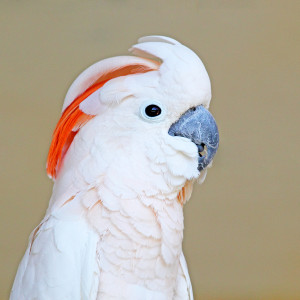 Likewise, we cannot understand the consciousness of small-brained intelligent animals like birds, bees and octopi. Even ants and termites show very unusual intelligence—termites with scientific capacities that human engineers cannot duplicate. (See post on intelligence of individual ants and termites).
Likewise, we cannot understand the consciousness of small-brained intelligent animals like birds, bees and octopi. Even ants and termites show very unusual intelligence—termites with scientific capacities that human engineers cannot duplicate. (See post on intelligence of individual ants and termites).
For two entirely different evolutionary paths to arrive at the same vocal learning after three hundred million years, there must be a driving force of mind searching for structures that will express these traits. Convergent evolution of such an extraordinary type is more evidence of mind interacting with genetic networks, messenger RNA, proteins, histones, neurons, circuits and brains. Isn’t it mind that, somehow, gives direction to the gradually evolving cells and organisms searching for mechanisms of higher cognitive function?

